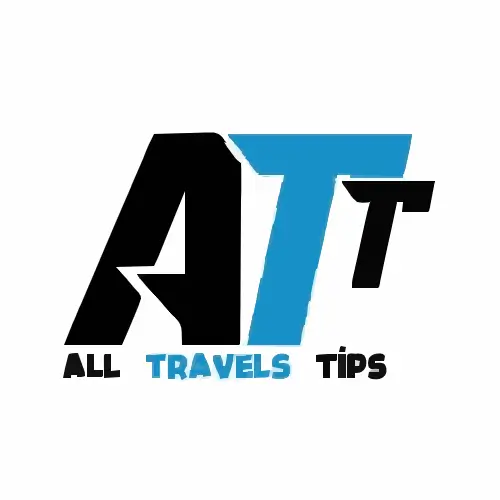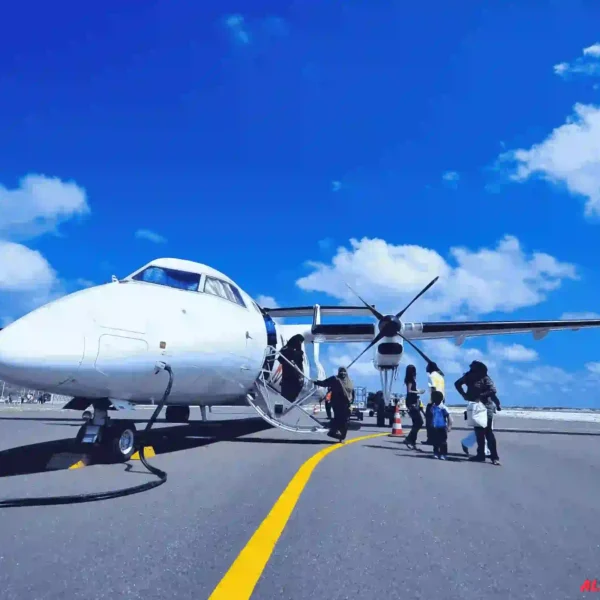Do you dream of hitting the road with no set destination, just pure adventure? A multi-destination road trip gives you the freedom to explore at your own pace, discover hidden gems, and create unforgettable memories. But without proper planning, it can quickly turn into a stressful experience.
That’s why this guide will walk you through step-by-step on how to plan a road trip with multiple stops—from choosing the best route and budgeting for fuel to packing essentials and avoiding common mistakes.
By the end, you’ll have a solid game plan to make your road trip smooth, budget-friendly, and full of adventure. Let’s dive in to learn how to plan a road trip!
Step 1 – Define Your Road Trip Goals
Before mapping out your route, the first step is to decide what you want from this road trip. Are you looking for scenic drives, adventure-packed destinations, or a relaxed getaway? Defining your goals will help you choose the best stops, set a budget, and plan a schedule that fits your needs.
1. What Type of Road Trip Do You Want?
When you plan a road trip, consider the theme of your trip. Here are some ideas:
✅ Scenic Route: Explore breathtaking landscapes like the Pacific Coast Highway or Route 66.
✅ Adventure Road Trip: Go hiking, camping, or trying extreme sports along the way.
✅ City-Hopping: Visit multiple cities and explore urban culture, food, and nightlife.
✅ Historical Tour: Discover museums, old towns, and cultural landmarks.
✅ National Parks Road Trip: Experience nature in places like Yellowstone, Yosemite, or the Grand Canyon.
2. How Long Will Your Road Trip Be?
- A weekend getaway (2-3 days) is perfect for short trips within your state.
- A week-long trip (5-7 days) allows more time to explore multiple locations.
- A cross-country road trip (2+ weeks) requires detailed planning, fuel budgeting, and rest breaks.
3. Will It Be a Round Trip or One-Way?
- Round Trip: Start and end in the same location, making it easier for car rentals and planning.
- One-Way Trip: Travel from Point A to Point B, requiring return transportation planning (like a flight back).
Step 2 – Map Out Your Route (Best Road Trip Planner Tools)
A great road trip starts with a well-planned route. You want to maximize your time, avoid unnecessary detours, and ensure you have enough fuel, food, and rest stops along the way.
1. Use the Best Route Planning Tools
The right tools make trip planning faster and stress-free. Here are some of the best road trip itinerary planners:
✅ Google Maps – Perfect for creating a multi-stop road trip route with real-time traffic updates.
✅ Roadtrippers – Helps discover scenic byways, hidden gems, and local attractions.
✅ Waze – Ideal for real-time navigation, avoiding road closures and heavy traffic.
✅ Furkot – Allows detailed planning with options for gas stations, hotels, and food stops.
📌 Pro Tip: Save your route offline in case you lose internet access in remote areas.
2. Factors to Consider When Choosing Stops
Planning stops ahead of time helps prevent long, exhausting drives and ensures you don’t miss must-see places. Keep these in mind:
🚗 Driving Distance Per Day – Aim for 4-6 hours of driving per day to keep the trip enjoyable.
⛽ Gas Stations & Charging Points – If you’re driving an EV, check charging stations on apps like PlugShare.
🌅 Scenic Routes vs. Highways – Highways are faster, but scenic byways (like Blue Ridge Parkway) offer breathtaking views.
🛏️ Rest Areas & Overnight Stops – Find safe, comfortable spots for breaks, meals, and accommodation.
3. How to Optimize Your Route for Efficiency
A poorly planned route can add extra miles and waste fuel. Use these strategies:
✅ Group nearby destinations together to avoid unnecessary backtracking.
✅ Check traffic patterns to avoid rush hours in major cities.
✅ Plan alternative routes in case of road closures or bad weather.
Step 3 – Budgeting for a Multi-Stop Road Trip
A road trip can be affordable or expensive, depending on how well you plan. Setting a realistic budget ensures you enjoy the journey without running out of cash halfway. Here’s how to calculate costs and save money on your trip.
1. Major Expenses to Consider
Break your budget into these key categories:
✅ Fuel Costs – Use a fuel calculator like GasBuddy or ViaMichelin to estimate gas expenses based on distance and vehicle mileage.
✅ Accommodation – Budget for hotels, motels, hostels, or camping fees. Booking in advance can save up to 30%.
✅ Food & Drinks – Plan for restaurant meals, groceries, and road trip snacks. Cooking at campsites can save money.
✅ Tolls & Parking – Some routes have expensive tolls, so check maps for free alternatives.
✅ Attractions & Activities – Factor in entry tickets for national parks, museums, and adventure activities.
✅ Emergency Fund – Keep extra cash for unexpected expenses like car repairs or medical needs.
2. How to Save Money on a Road Trip
🚗 Choose Fuel-Efficient Routes – Highways burn less fuel than stop-and-go city driving.
🍽️ Pack Your Own Food – Bring a small cooler with snacks and meals to cut down on restaurant spending.
🛏️ Use Budget-Friendly Stays – Look for Airbnb deals, hostels, or campgrounds instead of hotels.
💳 Use Discount Cards & Apps – Apps like AAA, GasBuddy, and Groupon help find travel discounts.
🚧 Avoid Tourist Traps – Popular destinations can be expensive; explore less crowded alternatives nearby.
3. Sample Budget for a One-Week Road Trip
Here’s a rough estimate for a 7-day road trip (per person, mid-range budget):
| Expense Category | Estimated Cost |
|---|---|
| Fuel | $150 – $300 |
| Accommodation | $200 – $500 |
| Food & Drinks | $150 – $250 |
| Activities | $100 – $300 |
| Tolls & Parking | $30 – $80 |
| Miscellaneous | $50 – $100 |
| Total Estimated Budget | $680 – $1,530 |
📌 Pro Tip: Always overestimate your budget to avoid surprises. It’s better to have extra cash than to fall short.
Step 4 – Packing Essentials for a Multi-Stop Road Trip
Packing wisely can make or break your road trip experience. Forget something essential, and you might end up spending extra money or facing unnecessary stress. Here’s a Complete Travel Packing Checklist to keep you covered.
1. Must-Have Travel Documents
Before hitting the road, double-check these:
✅ Driver’s License & Vehicle Registration – Ensure they’re valid for the entire trip.
✅ Car Insurance & Roadside Assistance – Have a copy of your policy and contact numbers.
✅ Emergency Contacts List – Save key numbers in case of phone issues.
✅ Maps (Physical & Digital) – Google Maps is great, but keep a paper map in case of no signal.
2. Road Trip Safety & Car Essentials
A well-prepared car prevents breakdowns and ensures a smooth drive. Don’t forget:
🚗 Spare Tire & Tire Repair Kit – Flat tires can happen anytime. Be ready!
🔋 Portable Car Jump Starter – Avoid getting stranded with a dead battery.
⛽ Extra Fuel Canister – Useful for long stretches with no gas stations.
🔦 Flashlight & Batteries – Essential for night emergencies.
🛠️ Basic Tool Kit – Includes screwdrivers, pliers, and duct tape for minor fixes.
3. Comfort & Convenience Items
Long drives can get exhausting. Pack these to stay comfortable:
🛏️ Neck Pillow & Blanket – Perfect for road trip naps.
🕶️ Sunglasses & Sunscreen – Protect yourself from the sun.
🧻 Wet Wipes & Tissues – Useful for quick clean-ups.
🎵 Playlist & Podcasts – Keep the mood lively with good music and interesting podcasts.
🔌 Car Charger & Power Bank – Keep your devices powered up on the go.
4. Food & Drink Essentials
Packing your own snacks saves money and keeps you energized:
🥤 Reusable Water Bottles – Stay hydrated and reduce plastic waste.
🍎 Healthy Snacks – Nuts, fruits, and protein bars are great for energy.
🍽️ Portable Cooler – Keeps drinks and perishable food fresh.
☕ Travel Mug – Perfect for morning coffee on the road.
5. Clothing & Weather Essentials
Check the weather forecast and pack accordingly:
🧥 Layered Clothing – Weather can change unexpectedly, so pack a jacket.
👟 Comfortable Shoes – Ideal for long walks or hikes.
☔ Rain Gear – Umbrella or raincoat just in case.
📌 Pro Tip: Keep your essentials in an easily accessible bag rather than stuffing them deep in the trunk.
Step 5 – Booking Accommodations & Staying Overnight
A multi-stop road trip means you’ll need comfortable and affordable places to stay along the way. Whether you prefer hotels, motels, or camping under the stars, planning ahead helps you avoid last-minute stress and high prices.
1. Choosing the Right Accommodation
Your choice depends on budget, comfort, and experience. Here are the most common options:
🏨 Hotels & Motels – Best for comfort and convenience. Use apps like Booking.com, Expedia, or Priceline to find deals.
🏕️ Camping & RV Parks – Perfect for budget-friendly and outdoor adventures. Check Campendium or The Dyrt for campgrounds.
🏡 Vacation Rentals (Airbnb & Vrbo) – Ideal for longer stays or group travel. Offers kitchen facilities to save on food.
🚗 Car Camping – If you’re traveling on a tight budget, sleeping in your car at designated areas or rest stops is an option.
📌 Pro Tip: Always check reviews, safety ratings, and cancellation policies before booking.
2. How to Find Budget-Friendly Stays
Accommodation can be one of the biggest expenses on a road trip. Here’s how to save money:
✅ Book in Advance – Last-minute bookings often cost more. Plan at least a few days ahead.
✅ Use Loyalty Programs & Discounts – Sign up for hotel rewards programs (Marriott Bonvoy, Hilton Honors) or use AAA discounts.
✅ Consider Hostels or Shared Stays – Websites like Hostelworld help find affordable dorm rooms.
✅ Stay Outside Major Cities – Accommodations in city centers are pricey. Consider nearby suburbs or small towns.
3. Best Apps & Websites for Road Trip Accommodations
These platforms help you find the best deals:
🔹 Google Hotels – Compare hotel prices across multiple booking sites.
🔹 HotelTonight – Great for last-minute hotel discounts.
🔹 Couchsurfing – Stay with locals for free (great for meeting new people).
🔹 Hipcamp – Find unique camping spots on private land.
🔹 iOverlander – Best for RV and car camping spots.
📌 Pro Tip: If you’re flexible, try bidding for hotel deals on Priceline’s “Name Your Price” feature.
Step 6 – Driving Tips & Road Safety
A successful road trip isn’t just about reaching your destinations—it’s about staying safe and enjoying the ride. Whether you’re driving through mountains, highways, or remote areas, these tips will help you avoid mishaps and keep the journey smooth.
1. Stay Alert & Avoid Fatigue
Long hours on the road can be exhausting. Here’s how to stay sharp:
✅ Take Breaks Every 2–3 Hours – Stop to stretch, grab a snack, or take a short walk.
✅ Share the Driving – If traveling with others, switch drivers every few hours.
✅ Stay Hydrated & Eat Light – Heavy meals can make you sluggish, so opt for healthy snacks.
✅ Use Rest Areas Smartly – Pull over for power naps if feeling drowsy.
📌 Pro Tip: If you’re feeling sleepy, don’t push through—find a safe place to rest.
2. Follow Traffic Laws & Road Signs
Different states and countries have different traffic rules. Stay compliant by:
🚦 Obeying Speed Limits – Speeding increases accident risks and can get you a hefty ticket.
🛑 Watching for Road Signs – Pay attention to stop signs, detours, and wildlife crossings.
🚗 Keeping a Safe Distance – Tailgating increases crash risks—leave at least a 3-second gap.
3. Be Prepared for Unexpected Situations
Even with careful planning, things can go wrong. Stay prepared with:
🔋 A Fully Charged Phone & Emergency Contacts – Save numbers for roadside assistance and local authorities.
🛠️ An Emergency Kit – Include a first aid kit, flashlight, jumper cables, and basic tools.
📍 Offline Maps – Apps like Google Maps, Maps.me, or Gaia GPS work without the internet.
🌦️ Check the Weather – Avoid driving in heavy storms, fog, or icy roads.
4. Smart Navigation & Traffic Avoidance
Use the right apps to plan your route and avoid delays:
📍 Google Maps & Waze – Best for live traffic updates and alternative routes.
⛽ GasBuddy – Finds the cheapest gas stations along your route.
🚗 Parkopedia – Helps locate parking spots in busy cities.
📌 Pro Tip: Avoid rush hours in big cities to save time and fuel.
Step 7 – Making the Most of Each Destination
A road trip isn’t just about getting from place to place—it’s about fully experiencing each stop. Whether you’re visiting bustling cities, hidden gems, or natural wonders, here’s how to maximize your time and enjoy every moment.
1. Plan Your Activities, But Stay Flexible
A well-planned itinerary helps, but leaving room for spontaneous adventures makes the journey exciting.
✅ List Must-See Attractions – Research top landmarks, scenic spots, and cultural experiences before arriving.
✅ Try Local Food & Markets – Every place has unique dishes and street food—explore them!
✅ Look for Free or Budget-Friendly Activities – Many cities have free walking tours, parks, and public events.
✅ Leave Room for Unplanned Stops – Roadside diners, quirky museums, or unexpected detours often lead to amazing memories.
📌 Pro Tip: Use Google My Maps to mark key attractions and hidden gems before you arrive.
2. Capture the Moments, But Stay Present
Memories last longer when you fully experience the moment, rather than just taking photos.
📸 Take Photos & Videos – Capture landscapes, street art, and candid moments.
📝 Keep a Travel Journal – Jot down experiences, funny moments, and personal highlights.
🚫 Limit Screen Time – Avoid being glued to your phone—soak in the sights and sounds.
3. Connect with Locals & Fellow Travelers
Talking to locals often leads to the best experiences and insider tips.
👋 Chat with Locals – Ask about hidden spots, best restaurants, and cultural customs.
🏡 Support Local Businesses – Eat at family-run cafes and shop at local markets.
🚶 Join Local Tours or Events – Engage in community-led experiences like cooking classes or walking tours.
📌 Pro Tip: If you’re in a foreign country, learn a few basic phrases in the local language—it goes a long way!
4. Stay Safe & Respect Local Culture
Every destination has its own customs, traditions, and safety rules—be a responsible traveler.
✅ Respect Local Customs & Dress Codes – Some places may have cultural dress expectations.
✅ Follow Environmental Guidelines – Stick to designated trails, avoid littering, and support eco-friendly tourism.
✅ Stay Aware of Your Surroundings – Keep an eye on your belongings, avoid unsafe areas, and trust your instincts.
📌 Pro Tip: Research local scams and safety tips for each destination before visiting.
Step 8 – Budgeting & Managing Expenses on the Road
A road trip doesn’t have to break the bank! With smart planning and money-saving tricks, you can explore multiple destinations without overspending. Here’s how to stay on budget and track your expenses effectively.
1. Set a Realistic Road Trip Budget
Before hitting the road, estimate your costs to avoid running out of cash mid-trip.
💰 Key Expense Categories to Plan For:
✅ Fuel Costs – Use apps like GasBuddy or Waze to find cheap gas stations along your route.
✅ Accommodation – Compare prices on Airbnb, Booking.com, and Hostelworld for affordable stays.
✅ Food & Drinks – Balance dining out with grocery shopping to save money.
✅ Attractions & Activities – Look for free parks, museums, and city passes to cut costs.
✅ Tolls & Parking – Some highways and cities charge fees—budget accordingly.
✅ Emergency Fund – Set aside extra cash for unexpected expenses like car repairs.
📌 Pro Tip: Plan a daily spending limit and stick to it!
2. Save Money on Gas & Transportation
Fuel is a major expense on any road trip, but you can reduce costs with these tips:
⛽ Use Fuel Discount Programs – Apps like Upside (formerly GetUpside) offer cashback on gas.
🚗 Drive Efficiently – Avoid rapid acceleration, idling, and high speeds to save fuel.
🏎️ Lighten Your Load – A heavier car burns more fuel—pack smart and avoid unnecessary weight.
🚦 Avoid Rush Hour Traffic – Stop-and-go driving wastes fuel—plan routes to avoid congestion.
📌 Pro Tip: Fill up in suburban areas, as gas is usually more expensive in city centers and remote locations.
3. Eat Smart & Cut Food Costs
Food expenses can add up quickly, especially at tourist spots. Here’s how to eat well without overspending:
🍎 Grocery Shopping & Meal Prep – Stock up on snacks, fruits, and easy-to-make meals at supermarkets.
🍔 Limit Restaurant Visits – Eat out at local diners or food trucks instead of expensive restaurants.
🧊 Use a Cooler – Keep drinks, sandwiches, and leftovers fresh and accessible.
🎟️ Find Food Deals & Discounts – Use apps like Too Good To Go or Happy Hour specials to save on meals.
📌 Pro Tip: If your accommodation has a kitchen, cook your own meals for big savings.
4. Track Your Expenses & Stay on Budget
Keeping track of your spending prevents surprises and helps you adjust if needed.
📊 Best Budgeting Apps for Road Trips:
🔹 Trail Wallet – Designed for travelers, it lets you categorize expenses easily.
🔹 Splitwise – Perfect for group trips, helps split costs fairly.
🔹 Mint or PocketGuard – Great for real-time expense tracking and alerts.
📌 Pro Tip: Keep a small notebook or Google Sheets file to manually track spending if you prefer pen-and-paper budgeting.
Step 9 – Returning Home & Wrapping Up Your Road Trip
The journey might be over, but the experience doesn’t end when you pull into your driveway. Here’s how to wrap up your road trip the right way, ensuring you preserve your memories and prepare for your next adventure!
1. Unpack & Clean Your Car
Long road trips can leave your car messy and cluttered. Before you settle in, give it a good clean-up:
🧹 Declutter the Car – Remove trash, food wrappers, and unnecessary items.
🛢️ Check Fluids & Tire Pressure – Ensure your car is in good shape after the trip.
🧼 Wash & Vacuum – Get rid of dirt, dust, and stains from the road.
📌 Pro Tip: If you rented a car, check for any damages before returning it to avoid extra charges.
2. Organize Your Travel Photos & Videos
Sorting through your travel memories right away keeps them fresh and meaningful.
📁 Create Folders – Organize photos by destination or activity.
📸 Edit & Share – Enhance your best shots and post them on social media or a travel blog.
📜 Write a Recap – Jot down key moments in a journal or digital notes for future reference.
📌 Pro Tip: Use Google Photos or Dropbox to back up your pictures safely.
3. Reflect on the Trip & Plan Your Next One
Every road trip teaches something new. Take a moment to review what went well and what could improve.
✅ Best Moments – What were your favorite stops and experiences?
✅ Challenges Faced – What obstacles did you encounter, and how can you avoid them next time?
✅ Budget Review – Did you stay on budget? Where could you have saved more?
📌 Pro Tip: Start planning your next trip while the excitement is fresh—road trips only get better with experience!
Final Thoughts: Your Next Road Trip Awaits!
Road trips are all about freedom, adventure, and unforgettable memories. With proper planning, budgeting, and flexibility, you can make every journey smooth, exciting, and stress-free. So, whether it’s your first trip or your tenth, start mapping out your next adventure—the open road is calling! 🚗💨






